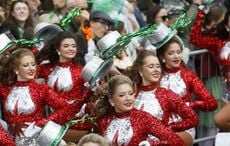Homer Simpson, the cuddly but stupid cartoon character familiar from our TV screens, may have been inspired by an Irish comic strips from the late 1800s. The cartoons portrayed the Irish as both lazy and fond of alcohol.
Canadian researcher Jeet Heer claims that even Homer’s jawline can be seen in the bigoted 19th century cartoons.
“We’ve already seen how the minstrel/blackface image lives on in the guise of Mickey Mouse,” writes Heer, a historian at York University in Toronto, on the blog he co-authors with other researchers. “Something similar happened to the Victorian stereotype of the Irish, which now has mysteriously morphed into the relatively benign form of Homer Simpson.”
The racist cartoons signalled British worries about the Irish, Heer continues. “The Victorian image, created by a mixture of English anxiety over the Irish independence movement and the rise of pseudo-Darwinian racial science typically portrays the Irish as a separate race, closer to primates than to humans.
"In countless Victorian cartoons. the typical Irishman ('Paddy') was shows to be violent, ignorant, drink-prone with a pronounced prognathism of the jaw-line to indicate a simian personality.”
In the Victorian era and even beyond, the Irishman was both a figure of mockery and of fear.
Homer Simon specifically resembles a character called Jiggs in an American comic strip from 1913, according to Heer. Jiggs is an illiterate layabout construction worker who gets rich quick (he’s also a social climber).
The creators of Homer may have been influenced by many of Jiggs’ traits, Heer suggests. Jiggs and Homer are each "proudly and pugnaciously plebeian, resistant to reform and attempts at social improvement, fond of alcohol and barroom conviviality, and resigned to their family situation although occasionally balky at following orders.”
At least Homer is likeable. Heer adds, “despite all his unhygienic traits, there is something endearing about Homer.”




Comments